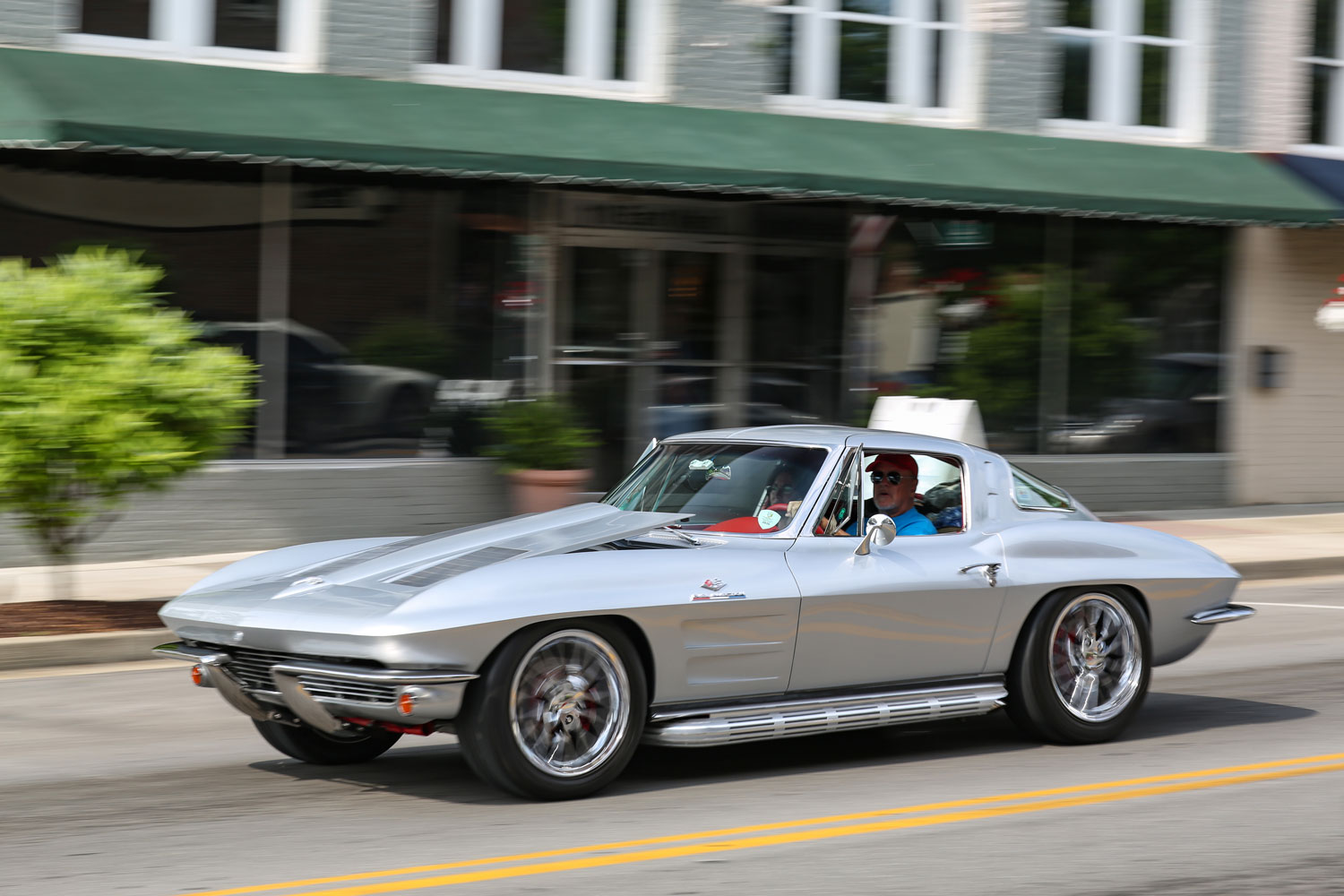Become C2 savvy with this 1963–67 Corvette Sting Ray Spotter’s Guide
If you’re looking to quickly identify the specific model year of a C2 Corvette, Chevrolet made it pretty easy. For the C3, the difference often boiled down to obscure option availability or emblems, but each year of the 1963–67 Sting Ray offered subtle design differences in the fender vents, C-pillar vents, or hood treatment. A convertible can be a bit trickier, but we’ll help you. Just note the following year-by-year changes.
1963

The Corvette Sting Ray’s debut year was the only year for the hallowed split rear window. Spot that feature and the verdict’s in the bag—it’s a ’63. Of course, a convertible won’t have a split window, so luckily there’s the hood trim. Inspired by the 1959 Corvette XP-87 Stingray, production ’63 Corvettes used hood trim that simulated oil coolers. The fender details, just behind the front wheel opening, were twin horizontal recesses that carried over to 1964. Similar but smaller recesses are found in the C-pillar.
1964

Both the split window and simulated oil coolers were gone for 1964, but the hood still had the indentations where they would have gone, so they were more like simulated heat extractors. The twin horizontal fender recesses remained, and so did the corresponding C-pillar pockets, only now they were fitted by a pair of rectangular vents broken up with vertical fins.
1965

A new fender treatment came in 1965, ditching the twin horizontal fender recesses for triple vertical “gills.” Small-block cars got a new hood that kept the tapered center bulge from ’63 and ’64 but lost the recesses. Big-blocks, which debuted in production Corvettes in 1965, got a similar hood with a flared bulge near the cowl that allowed for more engine clearance. If you see “396” engine badging on the fender, that’s another indication it’s a ’65, since it was the only year that engine was available.
1966

The easiest way to identify a 1966 Sting Ray coupe is the elimination of the C-pillar pockets; otherwise, they may look identical to a 1965 at first glance. For convertibles, you’ll have to look at the emblems. New badging on the front, rear, and glove box put the Corvette script centered on top of the Sting Ray lettering, while the ’65 emblem offset the Corvette script to the left. Since the 396 was replaced by the 427 for ’66, a 427 emblem will eliminate the possibility that it’s a ’65.
1967

The last year of the C2 body style, 1967 Corvettes are easy to distinguish from the rest of their Sting Ray brethren since ’67 was the only year they had a backup light mounted high in the center of the tail panel. These cars also represent the only model year with five forward-canted vent openings on each fender. Another ’67-only cue is the “stinger” hood that came on 427-equipped cars. However, that hood is a popular upgrade for Sting Rays, so it’s often seen on earlier cars that aren’t concerned with maintaining their originality.
Happy detecting!


